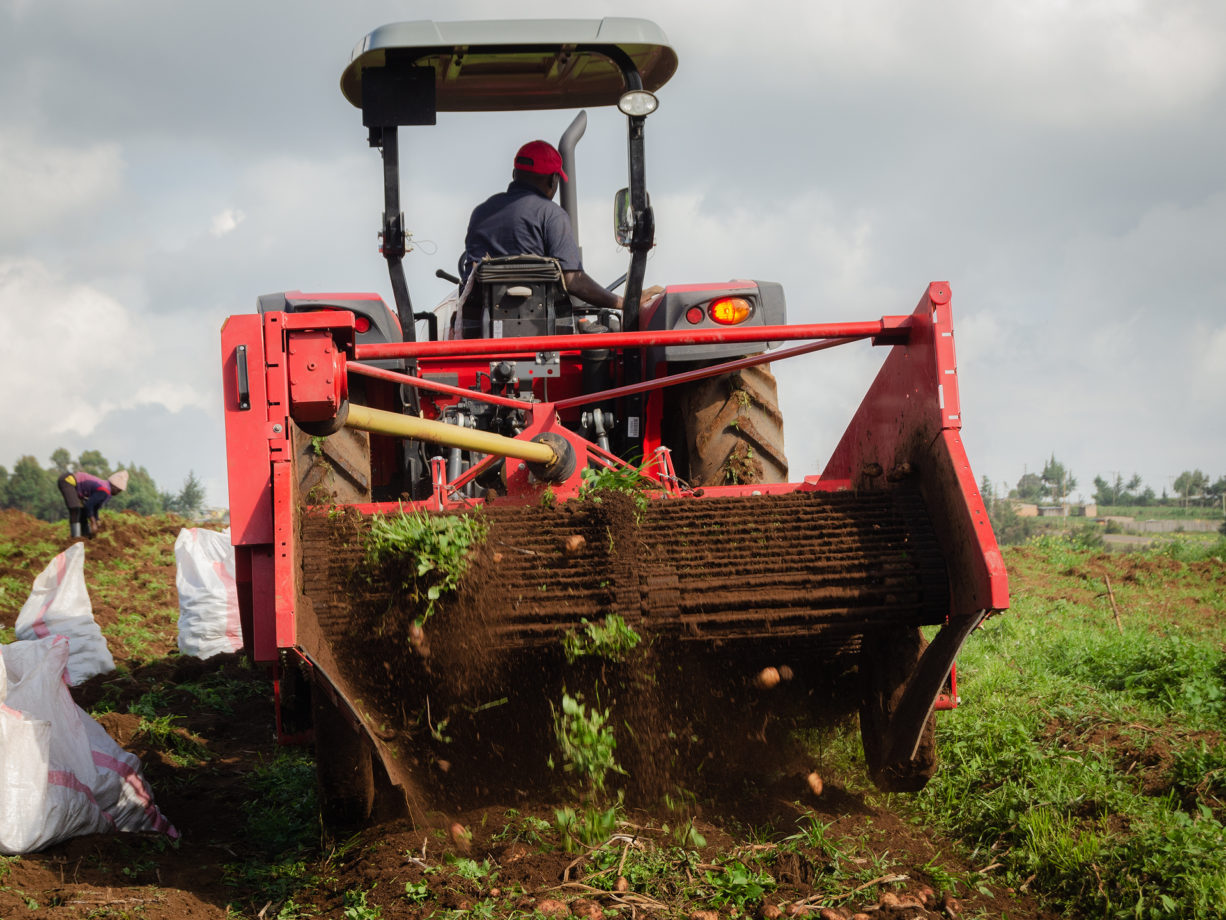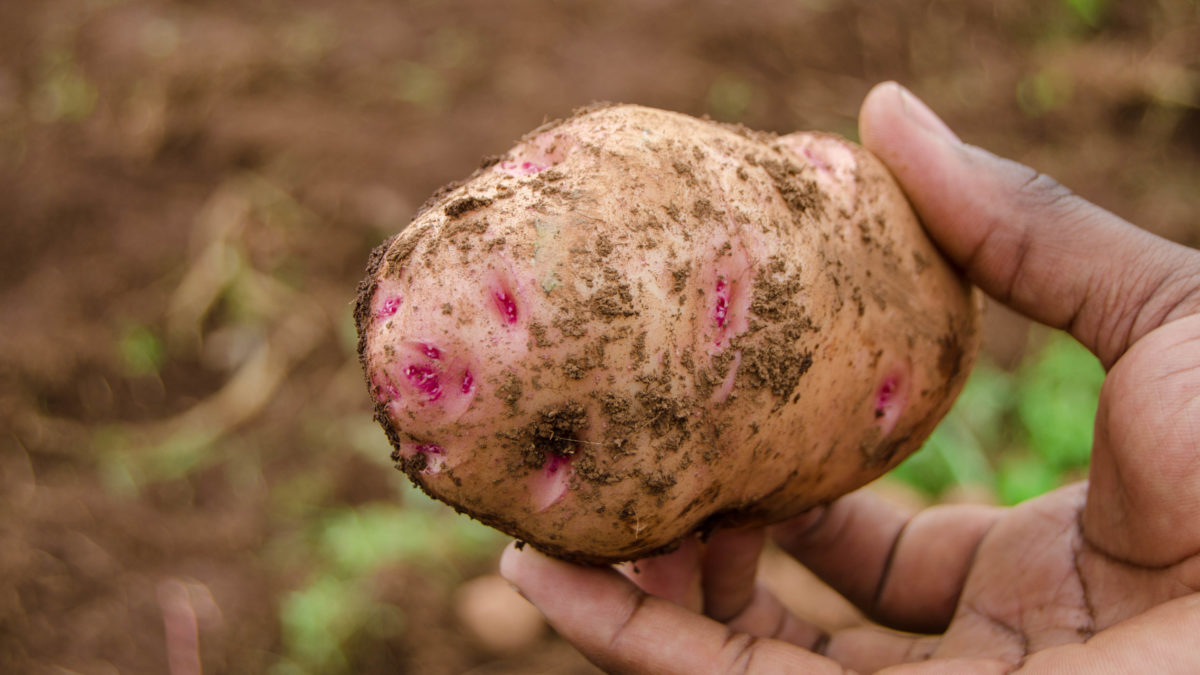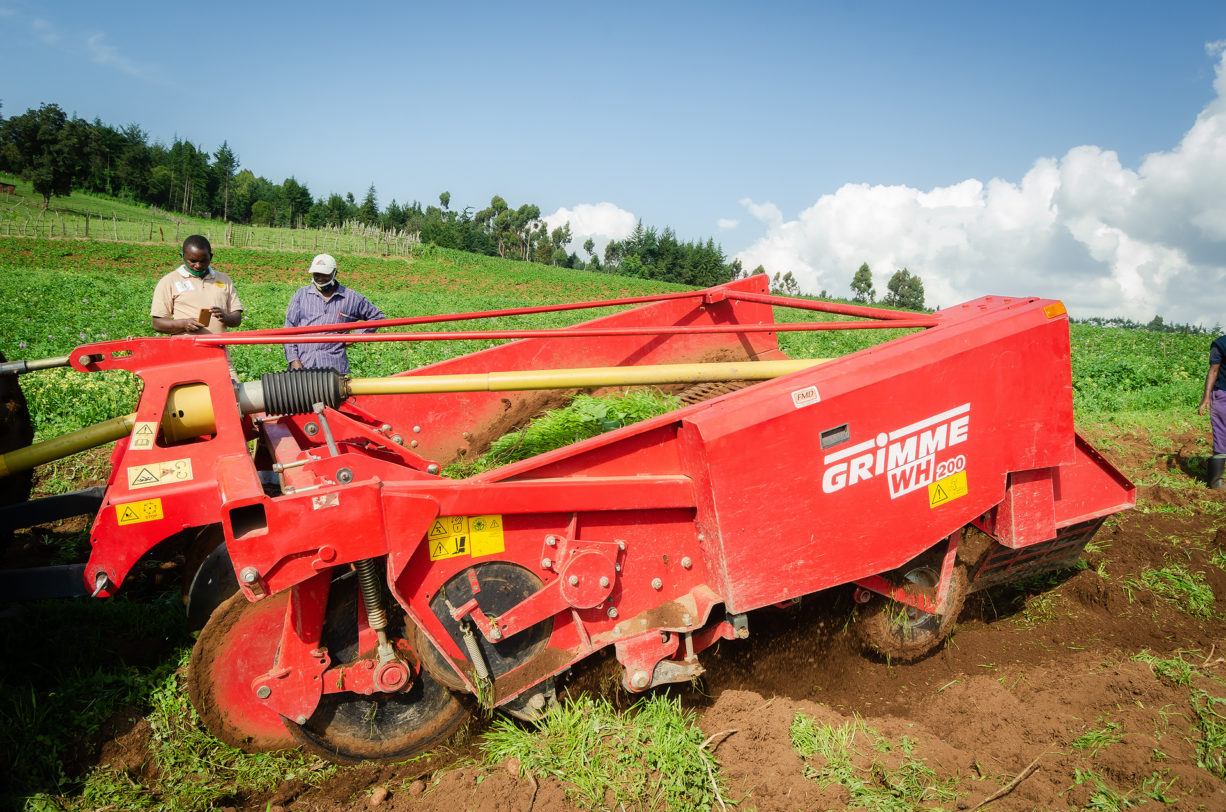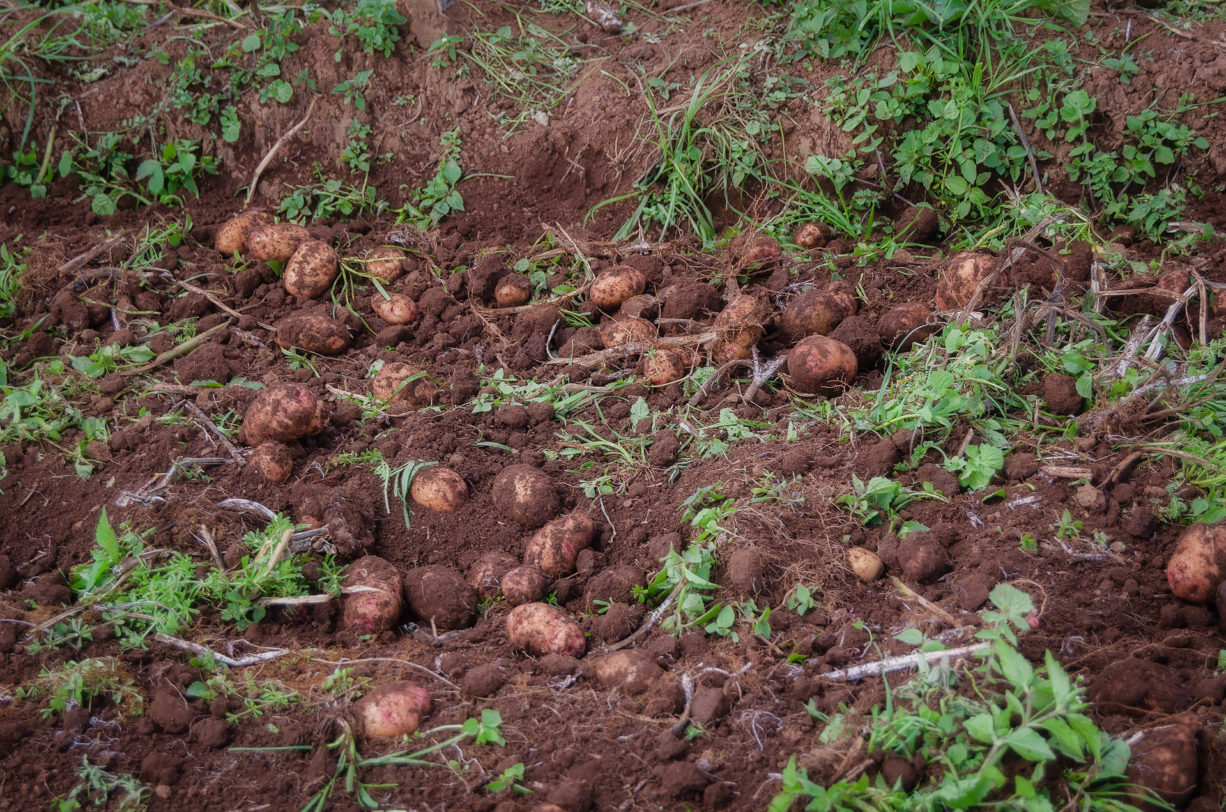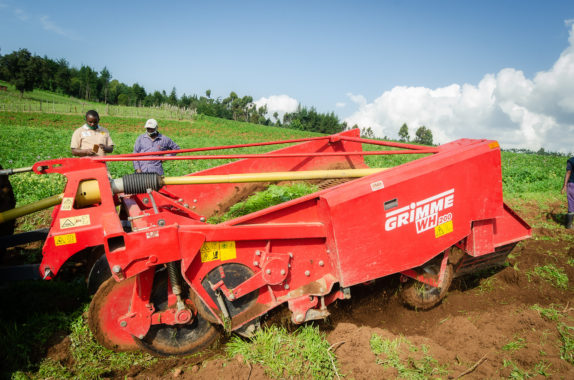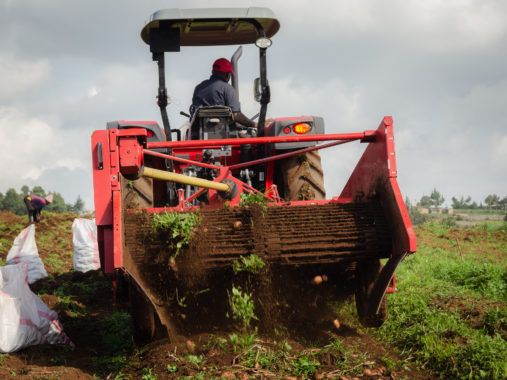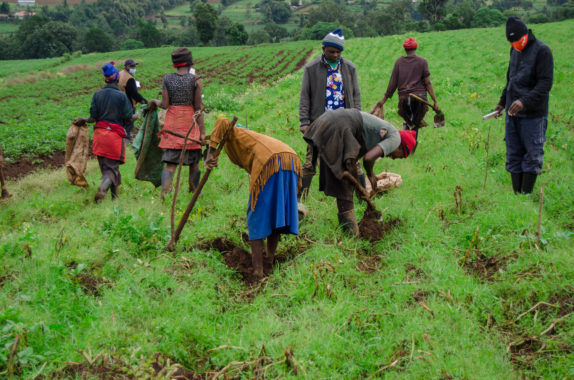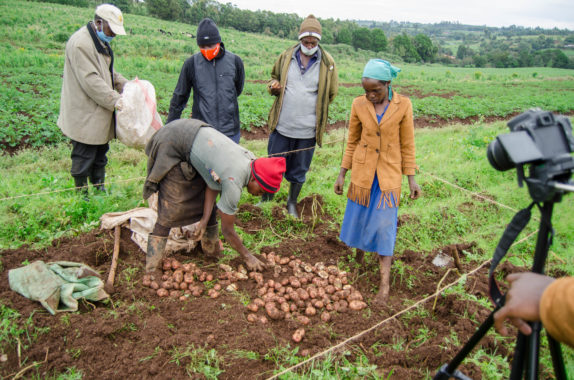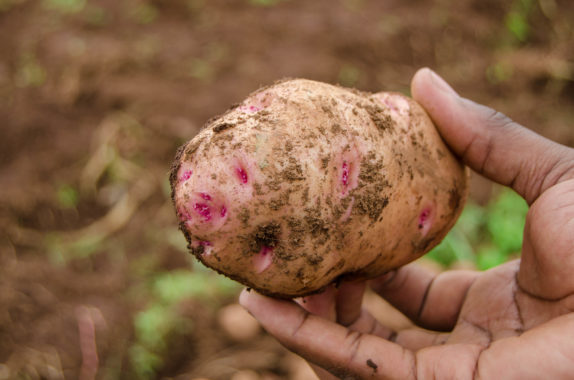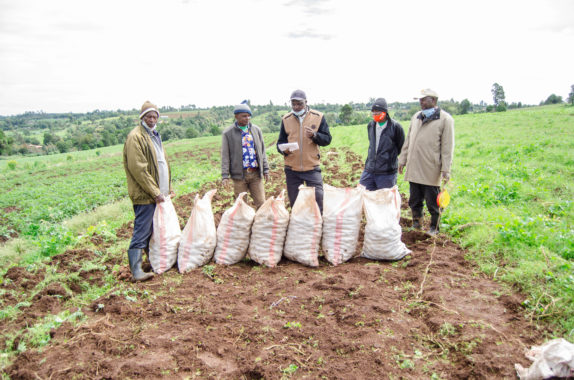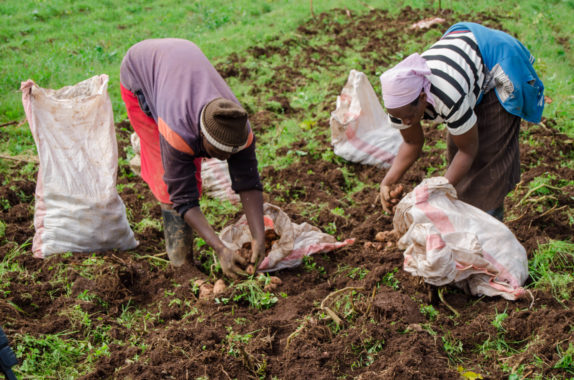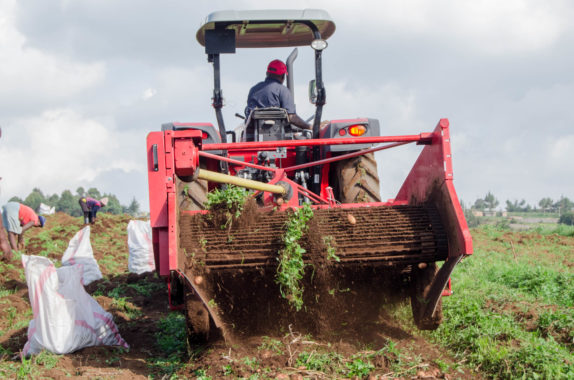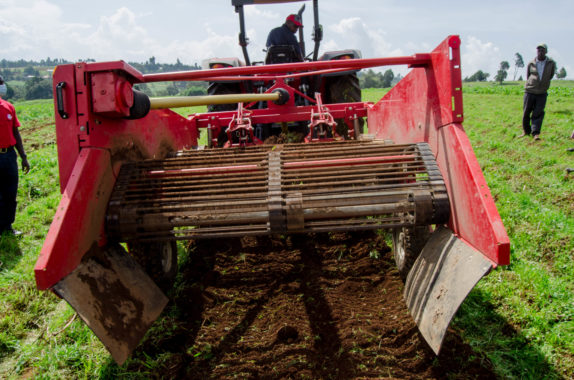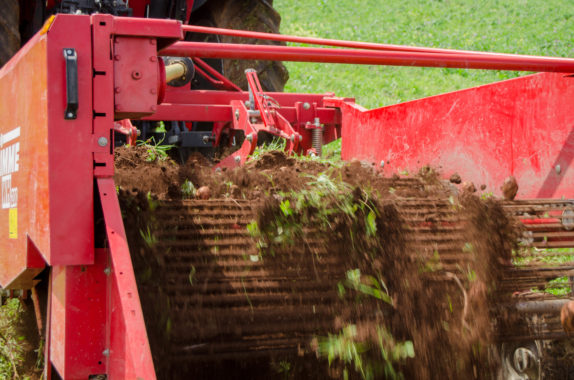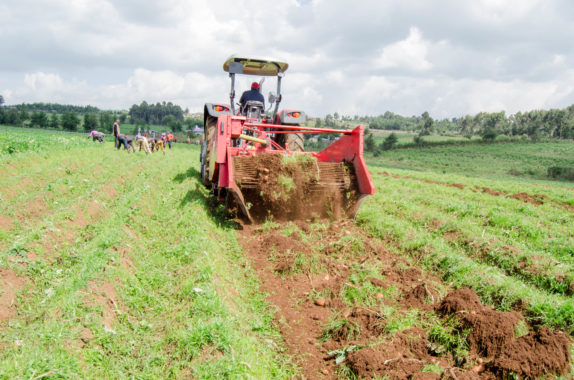Implementation
During the series of workshops, it was decided to plan and prepare a field day. Part of the field day addressed selecting and laying out two test fields for potato production – one field using purely traditional farming methods and the other using fully mechanised cultivation methods. The yield data from both fields was to be collected using systematic harvesting in order to enable a comparison which could demonstrate the advantages of the mechanised cultivation method.
Why mechanise?
The advantages of the mechanised method are many and varied: whereas in the traditional cultivation method, the seed potatoes are placed in the furrow on the hard soil and then covered with soil, in the mechanised method the seed potatoes are placed inside the raised, pre-formed earth ridge itself. The ridge is formed and the seed potato inserted in one continuous step. The advantages of this are: the root space is accessible for sowing because the soil is loose, thereby promoting plant growth. In addition, the ridge and seeds warm up more quickly, leading to better development of the plant. During harvesting, the mechanically planted potatoes are harvested gently and are not damaged, as modern harvesting technology is also used here. In traditional harvesting, however, the potatoes are harvested by hand hoeing. Harvesting by hand hoeing can damage the tubers and make them unfit for storage.
Mechanised processes are also much faster and better suited to react to constantly changing weather conditions due to a faster process. They also reduce the amount of heavy physical labour in the field itself.
